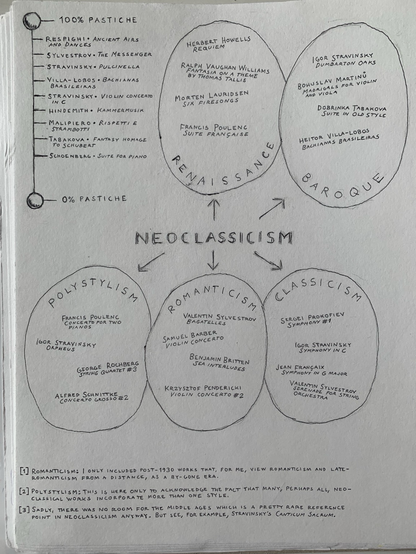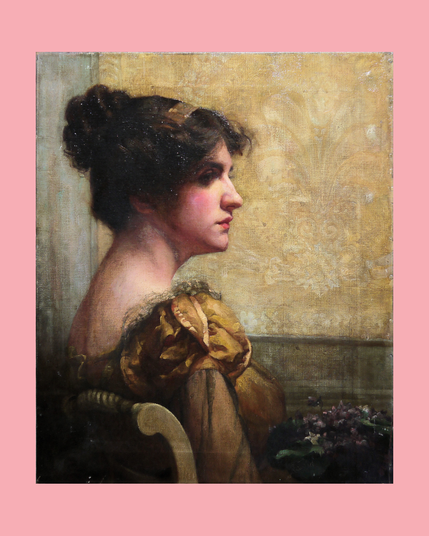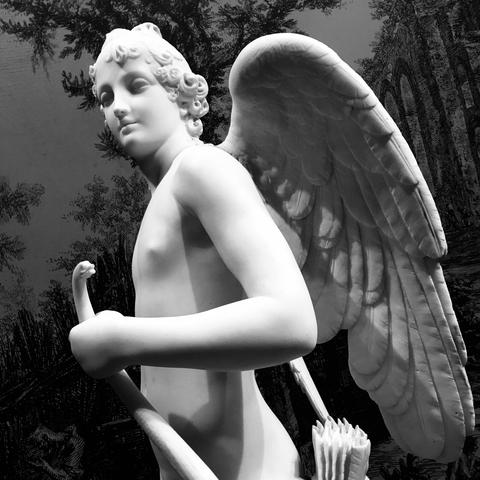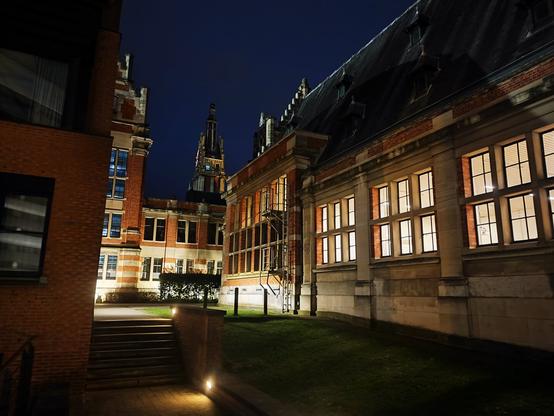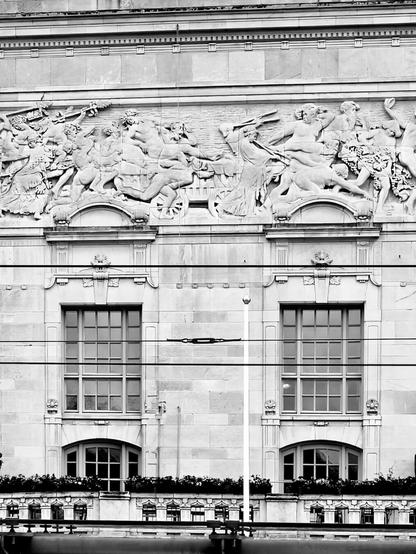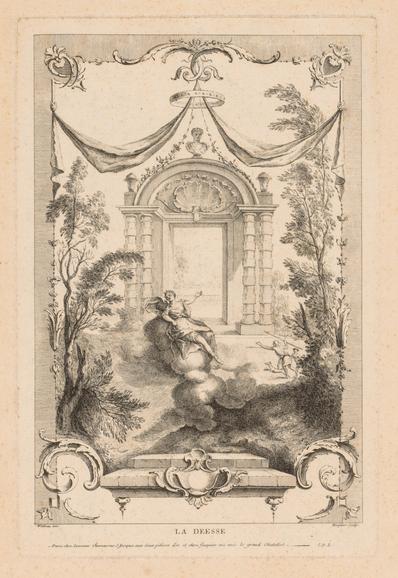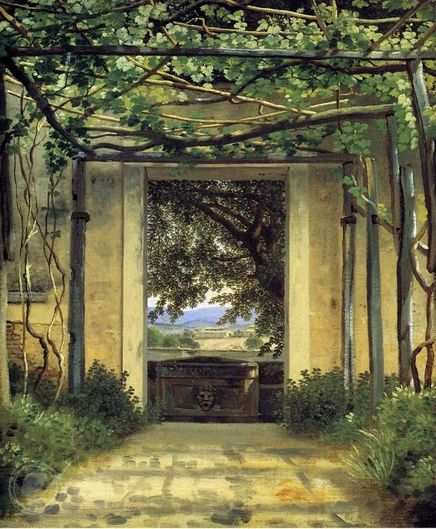This is my interpretation of neoclassicism, or the anatomy thereof. With examples. All other models are wrong! See also my pastiche-o-meter. Been listening to a lot of neoclassical music lately. Too much, apparently. #infographic #neoclassicism #neoclassical #classicalmusic #renaissance #romanticism #baroque #stravinsky #ValentinSylvestrov #poulenc #DobrinkaTabakova @classicalmusic @music @composers
#neoclassicism
Preview 302. Auktion
Englischer Neoklassizist, John William Godward Umkreis (circle), meisterhaftes Brustporträt einer jungen Frau im Profil, Ölgemälde um 1905
#preview #auction #auctionupdate #neoklassizismus #britishart #auktion #heidelberg #neoclassicism #Portrait
https://www.auktionen-in-heidelberg.de/
#neoclassicism #neoclassical #neoclassicalarchitecture #architecture #oudegracht #utrecht #darkbluesky #nightphotography #cityphotography #analogphotography #35mmphotography #filmphotography #filmphoto #nikonem #35mmfilm #35mm #photofed
In 2018, the “Hermitage Amsterdam” hosted ‘Classic Beauties’, an exhibition on neoclassicism. Featuring over 60 works by 25 leading artists, it explored the influence of antiquity on 18th-century art. 😍
Until 2022 it hosted exhibitions featuring art from the “Hermitage” in Saint Petersburg but eventually, the ties with Russia were severed, due to the Russian aggression in Ukraine. By fall 2023, the museum was renamed to “H’ART Museum” ♥️ 🇺🇦 🕊️
#Amsterdam #classicism #18thcentury #classicbeauties #hanspetersom #amstelhof #exhibition #photo #urbanart #mokum #noir #xxx #art #history #stopthewar #bnw #photography #concretejungle #hartmuseum #heart #hart #neoclassicism #artiseverywhere #streetphotography #marmer # #beeld #wings #museum #museo #hermitage #arte #artwork #angel #blackandwhite #marble #18thcenturyart #stonecarving #escultura #sculpture
"In a work obviously targeted, like Shaikh’s, at graduate students in economics, the authors approach their objective via a critique of orthodox growth theory and two types of growth models. One, the post-Keynesian Harrod-Domar model, is described as a knife-edge model, as any deviation from a balanced growth path sets off an inexorable process of either inflationary expansion (if investment is above the ‘warranted rate’) or deflationary contraction (if below) – unless states intervene to stabilize the system. The ‘neoclassical’ Solow model, constructed in response to the unrealistic instability of the post-Keynesian model, depended on the ludicrously unrealistic assumptions of perfect competition. It was later combined with the problematic concept of ‘total factor productivity’, and suffered from the notorious ‘aggregation problem’ of measuring the total stock of capital.
After concisely explaining the deficiencies of both models, the authors turn to classical political economy, including Marx, for an alternative. In summary, they counterpose Shaikh’s concept of ‘real competition’ to both neoclassical perfect competition theory and theories of monopoly capital. They explain how aggregation problems can be overcome using a labour theory of value, with estimates of socially-necessary labor-time for the elements of constant capital."
#Economics #PoliticalEconomy #EconomicGrowth #Neoclassicism #PostKeynesianism #Marx #Marxism #LongCycles
#modernism #classicism #architecture #mobilephotography #nightphotography #brutalism #modernistarchitecture
#MuseumIsland #Berlin #Architecture #Colonnades #NightScene #Symmetry #Neoclassicism #LightArt #TravelPhotography #Germany
"A Study of a Woman from Nature," Marie-Denise Villers, 1802.
Villers (1774-1821) was a French Neoclassical portraitist, and came from a very artistic family; two sisters and a cousin all became noted portraitists.
Not much of her life is known; she is actually in the process of being rediscovered. Aggravatingly, it seems that quite a few of her works have been attributed to other artists...MALE ones, of course. Sigh.
(Pardon me. I hate being one of those men who trumpet their "feminism" from the rooftops because I am very suspicious of them, often for good reason (coughNeilGaimancough).)
Back to the painting....it's Neoclassicism, to be sure, but I think I see Romantic influences (the stormy sky, the mountains in the distance), and I love her style. The lace veil flopping over her face while she casually ties her slipper...she's obviously in front of someone she trusts. I can only hope that trust is not betrayed.
From the Louvre, Paris.
#Art #WomenArtists #WomenInArt #Neoclassicism #Portraits #MarieDeniseVillers
Marvel at "La Déesse," a stunning engraving celebrating neoclassical elegance! The serene figure of Diana amidst lush foliage captivates, while the cherub adds charm. What emotions does this work evoke in you?
#ClevelandArt #Neoclassicism #ArtAppreciation
https://clevelandart.org/art/1927.328
Today I got acquainted with the work of Steve Reich for the first time. Expanding the horizons of minimalist neoclassicism.
Thanks to @kai I was introduced to the work of Steve Reich for the first time. Expanding the horizons of minimalist neoclassicism.
Today I was introduced to the work of Steve Reich for the first time. I'm expanding the horizons of minimalist neoclassicism.
Sealtember!
Our adventure with the seals continues!
here you can find illustrations from number 6 to 10:
https://www.artstation.com/artwork/QKnQl4
All the illustrations are made with Krita (some are ugly, I admit, but I don't like some styles and the difficulty is high)
#art #artist #krita #twitchartist #twitchstreame #noai #sealtember2024
#challenge #seal #digitalart #illustration #artstation #Neoclassicism
Jean-Auguste-Dominique Ingres
* 29. August 1780 † 14. Januar 1867
#French #painter
https://archive.org/details/080249
#klassizismus #neoclassicism #malerei #JeanAugusteDominiqueIngres #painting #video #geburtstag #birthday #slide #slideshow
Sweet Melancholy, 1756. Joseph-Marie Vien (French, 1716–1809).
The Cleveland Museum of Art.
Vien plays an important part in the the history of French art. In the mid 1740s, his encounter with Roman art newly unearthed from Herculaneum prompted him to move away from the decorative frivolity of Boucher to a more severe style - the beginning of a shift from rococo to neoclassicism. David was apprenticed to him and clearly influenced by this shift.
The head in hand pose for melancholy antedates this canvas by hundreds of years, but I like the linear elegance with which it is deployed by the artist. Other touches appeal to me too, such as the little still life on the table and the interwoven fabric and pearls of the headband.
#Art #Painting #FrenchArt #Neoclassicism #JosephMarieVien
#LaDouceMélancolie
#Melancholy #ClevelandMuseumOfArt
#18thCenturyArt
"A Pergola, Italy," C. W. Eckersberg, 1814-16.
Dubbed "The Father of Danish Painting," Christoffer Wilhelm Eckersberg (1783-1853) was a celebrated Neoclassical painter and teacher who had an enormous influence on what was later called the Danish Golden Age.
Studying under such luminaries as Jean-Louis David, he spent some time in Florence and Rome, where he painted this image. It's unusual for his Roman works, as generally they're very strictly symmetrical and done with painstaking brushstrokes; this has SOME symmetry but also has the riotous grapevine, and uses broader brushstrokes.
Looks like a cool place for a glass of wine, eh?
From the Statens Museum for Kunst, Copenhagen.
#Art #DanishArt #CWEckersberg #Neoclassicism #Pergola #Italy
"Still Life with Fish," Carl Bloch, 1878.
Bloch (1834-1890) was a Danish Neoclassical painter. He started off painting genre scenes of everyday rural life, but expanded into historical and religious works, and had letters of admiration from Hans Christian Andersen.
Although he was not a member of the Church of Jesus Christ of Latter-Day Saints, his work is hugely influential on the denomination, who praise the lack of "Catholic" elements and imagery, and much Mormon art and media base themselves on Bloch's religious work.
This somewhat humorous scene, however, is from his more mature period. Bloch died young, of cancer, and his passing was considered quite a blow to the Nordic art world.
From the Statens Museum for Kunst, Copenhagen.
"Self-Portrait," Marie Benoist, 1786.
Marie-Guillemine Benoist (1768-1826) was obviously very talented, having painted this while only in her teens. And she went on to be an acclaimed neoclassical and historic painter. She was initially trained under Élisabeth Vigée Le Brun and later under Jacques-Louis David, so she had guidance from some of the top talent of her day.
She became an in-demand portraitist, and even had commissions from Napoleon Bonaparte himself. She enjoyed quite a big of success...until the Bonaparte era crumbled. In the face of growing conservatism in Europe, she tactfully retired from public life and only rarely painted.
I love the energy depicted here...it's so obviously the work of someone very young and very excited and confident.
From the Staatliche Kunsthalle Karlsruhe.
#Art #SelfPortrait #NeoClassicism #MarieBenoist #WomenAritsts #WomenInArt
"Urania, the Muse of Astronomy, Reveals to Thales the Secrets of the Skies," Antonio Canova, 1798-99.
Canova (1757-1822) was better known as a Neoclassical sculptor. And I'll admit...as a painter, he's a great sculptor. But despite whatever technical deficiencies this may have, I find it a sweet and charming scene. It may have been a study for a proposed sculpture that never got off the ground.
The son of a stonemason, Canova was a busy sculptor pretty much as soon as he was old enough to pick up a chisel. By 1800 he was Europe's most celebrated sculptor, patronized by Napoleon (who was sculpted, nude, as Mars), and created a statue of George Washington for the state government of North Carolina.
And Thales? Thales of Miletus (626/623 - 528/525 BCE) was one of Greece's Seven Sages, a philosopher who pioneered explaining the world through natural philosophy rather than mythology, and the use of mathematics, science, and deductive reasoning. This painting refers to his observations of the movements of the planets, which enabled him to be the first recorded person to predict an eclipse through scientific observation.
From the Museum Gipsoteca Antonio Canova, Possagno, Italy.
#Art #ItalianArt #AntonioCanova #Urania #Astronomy #ThalesOfMiletus #NotPerfectButCharming #NeoClassicism #Muse
